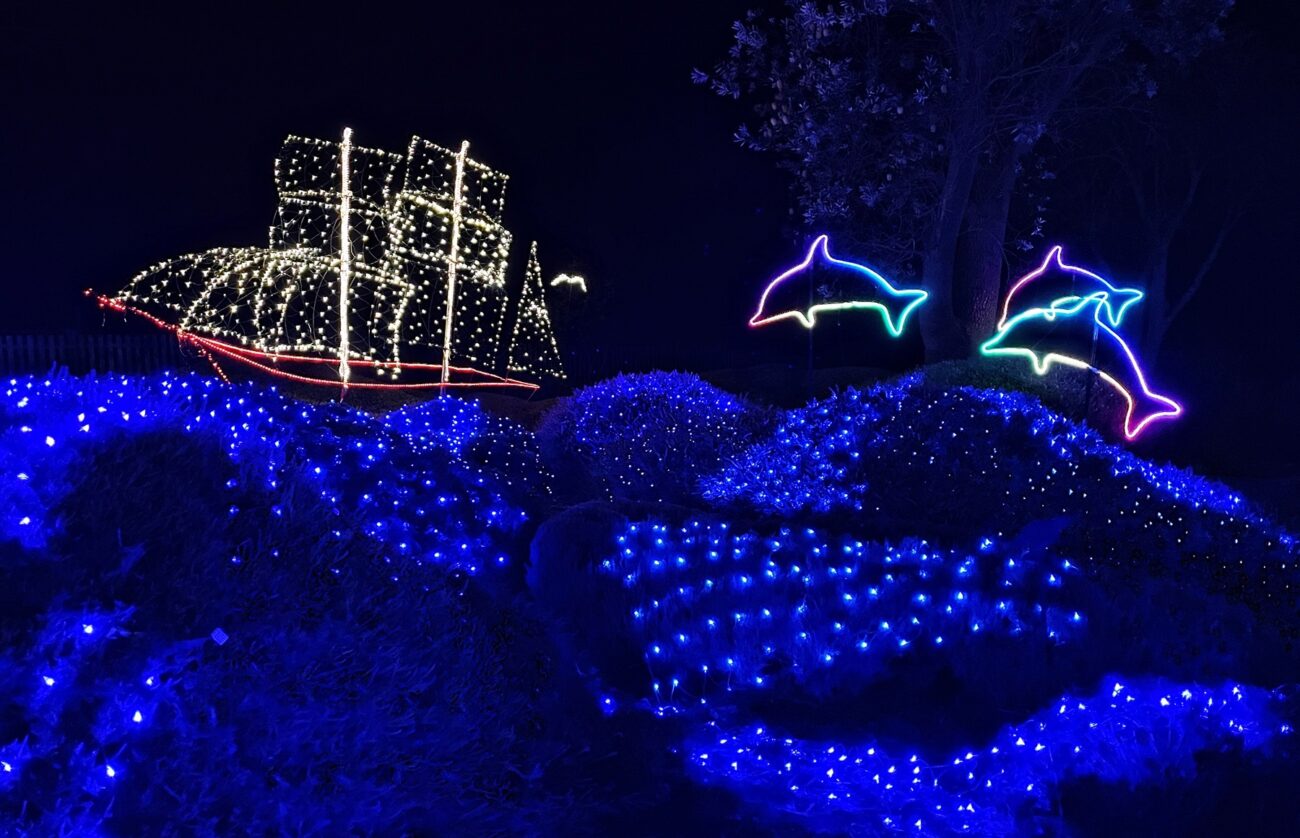Published on 12/05/2023
By Suzanne Pletcher
is a message of community, delight, and reverence for the natural world, including a commitment to energy efficiency and clean energy.
Thousands upon thousands of lights, hung by the Gardens’ horticulturists and dozens of volunteers, twinkle, cascade, undulate and pulse this season in eight distinctive theme areas that enthrall visitors wandering the quarter-mile path through heathers, succulents, camellias, sculptural bushes and towering trees transformed into creatures and otherworldly environments.
“We don’t know any more how many lights are used because we keep adding, but they are all LEDs, to conserve energy,” said Roxanne Perkins, the Gardens’ Communications Manager.
Our main goal always is to instill a love and joy of the natural world in botanical gardens, nature and wildlife in all of our visitors, young and old. The Festival of Lights extends that sense of wonder into the darker winter season.

Mendocino Coast Botanical Gardens created a winter light show in 2009, before such events became popular at botanical gardens nationally. The first year, the lights were all energy-hogging incandescents, flowers were created with chickenwire, and luminaries lined pathways. Admission was free.
Now in its 13th year (the show took one year off for COVID), about 9,000 people will wander the brilliant gardens during four weekends spanning Nov. 24 through Dec. 17. The festival is open Friday through Sunday, from 5 p.m. to 7 p.m. The expanded event costs $10, with children aged 16 and under free.
“The Gardens keep admission low to ensure that everyone in the community can enjoy them,” said Perkins. “It’s a fund-raiser but honestly, it’s mostly for the community.” Fifty volunteers join the Gardens’ nine horticulturists to welcome and guide visitors and help out in the gift shop.
Long before the holidays, beginning Oct. 1 every year, the Gardens’ horticulturists add lighting expert to their job titles and, with help from volunteers, throw open the doors of two shipping containers and a storage shed filled to the brim with lights, tech panels, and displays. There are row lights, string lights, spotlights, icicle lights, floodlights, and many, many more. New structures are built, old ones reinforced. Garden Manager Jaime Jensen, Maintenance Manager Pete Baker, and Event Coordinator Jaime Campione come up with innovative new technologies to time and change the colors, create cascades, twinkles and creatures that appear to move.

Photo credit: Roxanne Perkins
As holiday visitors enter, there’s a twinkling white wind turbine, a nod to presenting sponsor Sonoma Clean Power and its optional EverGreen renewable energy service. The Gardens wanted to set an example, Perkins said, and opted to upgrade to the utility’s EverGreen service to power all its festival lights—and operations year-round—with 100% renewable energy sourced from solar and geothermal. A line of white lights cascades down from the rotating arms of the turbine to the earth, where it snakes across the ground to power a tiny, quaint village.
From the wind turbine, visitors go on safari in an area featuring a giant white rhinoceros and friendly pink elephant. From there, they’ll enter an area with a dinosaur theme, featuring a volcano overflowing with red lava.
An original area of the Festival of Lights is an ocean theme featuring an octopus, porpoises, and a rendition of the Frolic clipper ship with white sails and masts. The real Frolic struck a reef off nearby Point Cabrillo in 1850 and ran aground with a load of household goods from China bound for sale in Gold Rush San Francisco. In the Festival of Lights, the Frolic rides an undulating sea crafted with blue lights on the Garden’s heath and heather collection.
There’s a pollinator theme area, underwater as well as space theme areas, and “We can’t forget to mention the peace sign,” said Perkins.
This year a new light display was created in the Garden’s forest area that is home to a nationally-recognized conifer collection.